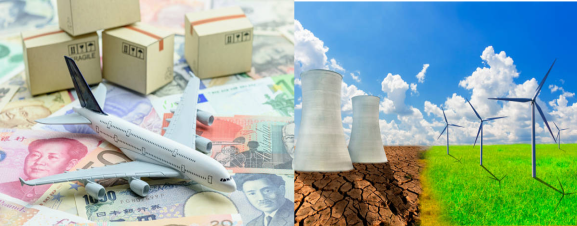Sindhu Bharathi, Sumathi Chakravarthy and Badri Narayanan Gopalakrishnan
This paper attempts to measure the impact of emission targets and reduction plans on economic and global value chain parameters. A computable general equilibrium (CGE) model is constructed under the Global Trade Analysis Project (GTAP) framework. The standard GTAP model is a multiregional, multisector model that accounts for linkages between economic agents—including households, governments, and the rest of the world. The GTAP-electricity (E)-Power model is linked to the GTAP-value-added (VA) model to study how reducing carbon emissions may affect GVCs. The potential for renewable energy to substitute for emission-intensive sources is also examined given the Paris Agreement goals and commitments. The impact of decarbonization on GVCs are estimated under two scenarios:(i) a business-as-usual (BAU) scenario where each country reduces carbon emissions from 2020 to 2030 by the same amount they did from 2010 to 2020 (or the same 2020 amount, if emissions rose); and (ii) a nationally determined contribution (NDC) scenario which estimates the economic and value chain impact of reducing emissions as specified by NDC targets(using a 2010 constructed baseline).
The BAU scenario shows that should ASEAN economies maintain the same level of emissions between 2020 and 2030, GDP will increase slightly (by $194 million). The NDC model shows that achieving NDC targets will cost ASEAN members much more ($50.1 billion). Rennert et al. (2022) estimate that the social cost of carbon is $185 per MtCO2e. ASEAN emissions were 1,651.9 MtCO2e in 2020, meaning the aggregate social cost from carbon emissions was about $306 billion. When countries achieve their NDC targets, the social cost savings will outweigh the estimated GDP loss of $255 billion. Investments in renewables reduce investments available elsewhere, particularly those energy intensive. The results of the GTAP-VA model shows that meeting NDC targets could cost ASEAN economies $165.2 billion in domestic value-added and $1.65 billion in foreign value-added.

